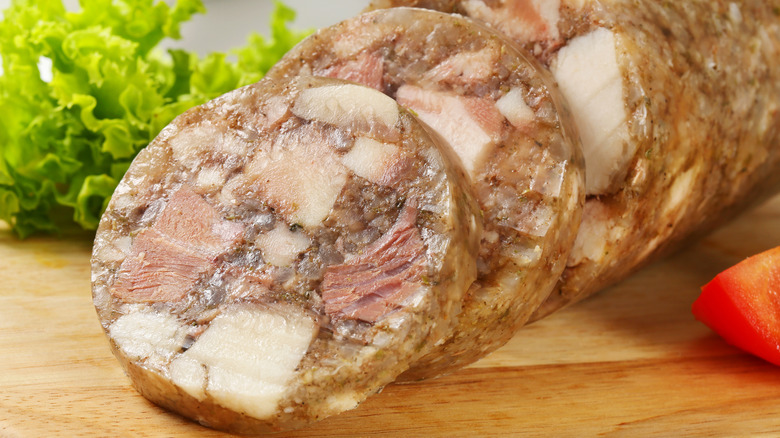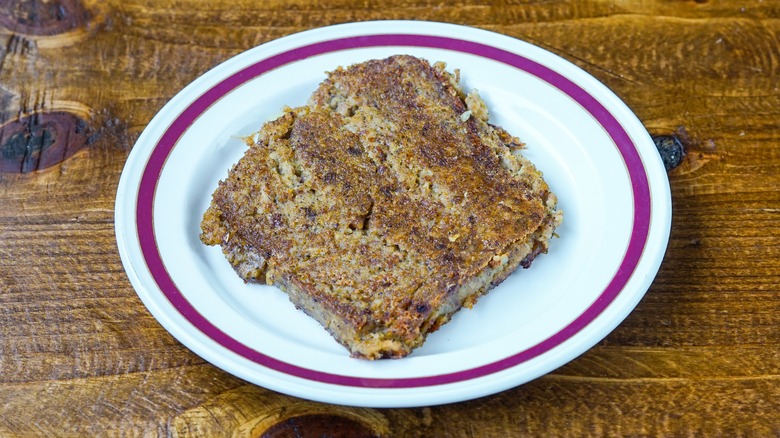The Difference Between Scrapple And Head Cheese
For tens of thousands of years, various cultures have come up with unique culinary creations designed to use all parts of the animal — what might be called nose-to-tail cooking in modern times. Dishes could include everything from traditional cuts of meat to organs, skin, and other more unusual offerings. Among these less common parts is the meat from the animal's head. This mixture forms significant parts of two similar dishes with a few critical distinctions — scrapple and head cheese.
Head cheese is the older of the two, with roots stretching back to Europe during the Middle Ages, a time when harsh living conditions required many people to make the most of the livestock they killed. There's no dairy involved — it's most commonly made from the head of a pig, though calf heads can also be used. The head is boiled or simmered for up to a day until the meat is fall-off-the-bone tender. This meat is then separated from the head while the cooking liquid is further boiled and reduced. Eventually, the seasoned head meat and reduced liquid are combined in a baking pan or other vessel. In most cases, the high collagen content of the animal's head will create a natural gel as it cools (similar to a savory Jello) though some chefs add extra gelatin for a firmer texture. Head cheese is typically served cold.
The difference comes down to fillers
Scrapple uses the same boiling process to create a rich, gel-like broth and tender meat. However, it sometimes uses parts of the pig beyond the head, like organs and other offal, and chops them finer than head cheese. In addition, scrapple introduces thickeners like cornmeal and buckwheat flour into the broth. Rather than creating a jelly-like head cheese, this produces a mushier, almost meatloaf-like texture with added flavor and calories. Scrapple is packed into loaves and served by pan-frying a slice, typically for breakfast. Instead of originating in the European Middle Ages, scrapple has its roots in the 17th- and 18th-century United States, particularly in mid-Atlantic states like Pennsylvania, Maryland, and Delaware.
While the two dishes are quite different in preparation, origin, and serving style, they share some important similarities, too. We've mentioned the use-it-all mindset that underpins the dishes already, but both also take advantage of some of the underrated health benefits of organs and other nontraditional meat, which is typically high in vitamins and minerals. However, they both can contain high levels of sodium and other less healthful substances as well, meaning they should be eaten in moderation.
So the next time you're craving a more unusual spin on typical meat dishes, give these two a try. After all, there's a reason they've been part of food culture for hundreds of years!

